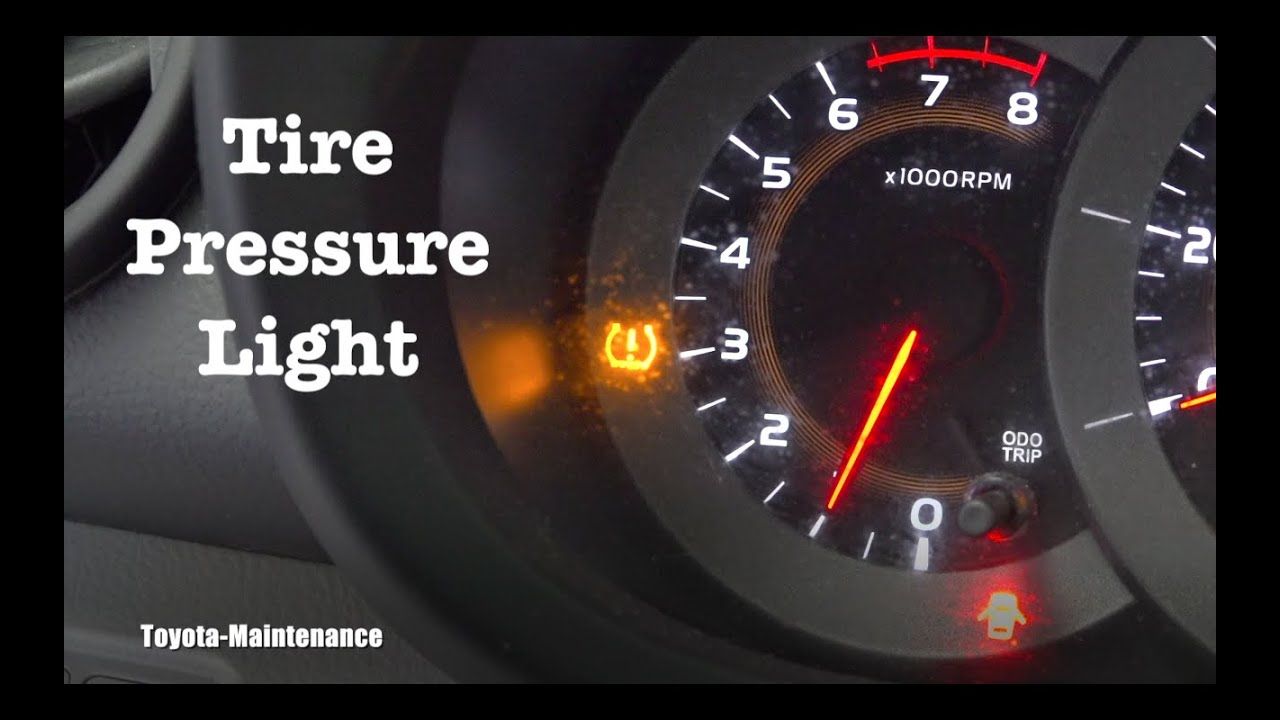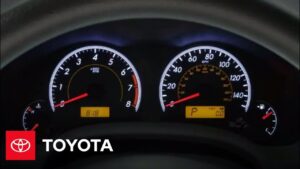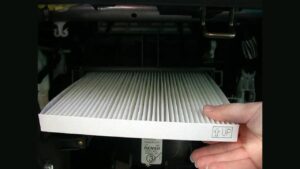Tire pressure monitoring systems (TPMS) are now a standard component in contemporary automobiles, including the Toyota Sienna. These systems alert drivers when tire pressure drops below a certain threshold, ensuring optimal safety and performance. However, encountering the tire pressure light can be alarming for drivers, especially if they are unsure how to reset it. We’ll explore resetting the tire pressure light in a Toyota Sienna, providing step-by-step instructions and alternative methods.
The Toyota Sienna Tire Pressure Light
Before diving into the reset process, it’s essential to understand what triggers the tire pressure light in a Toyota Sienna. The light typically illuminates when the tire pressure in one or more tires is significantly lower than the recommended level.
This could be due to temperature changes, tire damage, or normal wear and tear. Maintaining proper tire pressure is crucial, including ensuring optimal fuel efficiency, extending tire lifespan, and enhancing vehicle safety.
How to Reset the Tire Pressure Light Manually
Resetting the tire pressure light in a Toyota Sienna can often be done manually without requiring specialized tools. Here’s a step-by-step guide:
- Park the Vehicle: Ensure the vehicle is parked safely with the engine turned off.
- Inflate tires: If the tire pressure is low, inflate the tires to the recommended pressure level.
- Locate Reset Button: Depending on the Sienna model year, the reset button may be inside the glove compartment or near the steering wheel.
- Turn Ignition On Without starting the engine, turn the Ignition to the “On” position.
- Press and Hold Button: Press and hold the reset button until the tire pressure light blinks three times.
- Release Button: Release the button and wait for a few seconds.
- Start Vehicle: Start the engine and verify that the tire pressure light has turned off.
Using the Reset Button Method
Some Toyota Sienna models may feature a reset button directly on the dashboard. Here’s how to use this method:
- Turn Ignition On Similar to the manual method, turn the Ignition to the “On” position without starting the engine.
- Locate Reset Button: Look for the reset button near the steering wheel or on the dashboard.
- Press and Hold: Press and hold the reset button until the tire pressure light flashes three times.
- Release Button: Release the button and wait for the light to turn off.
Alternative Methods to Reset the Tire Pressure Light
If the manual and reset button methods don’t work, there are alternative options available:
- Using the OBD-II Scanner: An OBD-II scanner can reset various vehicle warning lights, including the tire pressure light. As you follow the instructions on the screen, connect the scanner to the OBD-II port on the car.
- Visiting a Mechanic: If resetting the tyre pressure light proves challenging, visiting a mechanic or dealership service centre is always an option. They have the expertise and tools to diagnose and resolve any TPMS issues.
Tips for Preventing the Tire Pressure Light from Coming On
While knowing how to reset the tire pressure light is essential, preventing it from coming on in the first place is even better. Here are some tips:
- Regular Tire Maintenance: Schedule regular tire inspections and maintenance checks to ensure proper inflation and tread depth.
- Checking Tire Pressure Monthly: Get into the habit of checking tire pressure at least once a month, especially before long trips.
- Monitoring for Leaks or Damage: Look for any tire damage or leaks, such as visible punctures or uneven wear.
TOYOTA TIRE PRESSURE MONITORING SYSTEM FEATURES
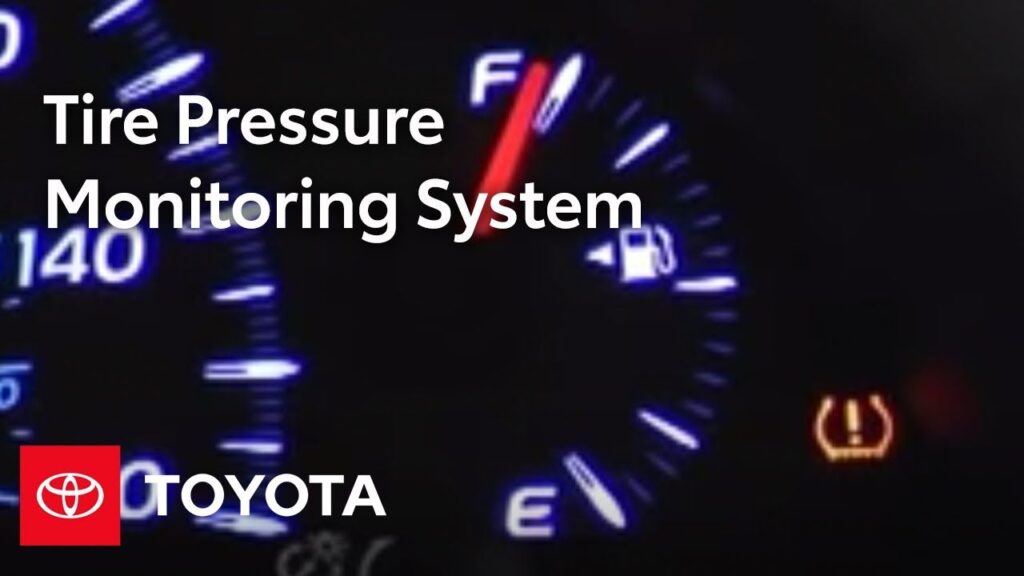
Your Toyota vehicle has a Tire Pressure Monitoring System (TPMS) designed to enhance safety and performance by monitoring tire air pressure. Understanding how this system works and resetting it when needed is crucial for maintaining optimal driving conditions. In this guide, we’ll delve into the features of the Toyota TPMS, explain the warning indicators, and provide step-by-step instructions for resetting the tire pressure light.
Features of the Toyota Tire Pressure Monitoring System
The TPMS in your Toyota utilizes small sensors to monitor your tires’ air pressure continuously. If the pressure drops below the recommended levels outlined in your owner’s manual, the system will automatically alert you. It’s essential to refer to your manual for precise pressure specifications tailored to your Toyota model.
When your Toyota Highlander or Camry Tire Pressure Light illuminates on the dashboard, it typically appears as a flat tire symbol with an exclamation point or simply as the letters “TPMS.” This warning should prompt immediate attention, as low tyre pressure can significantly impact your vehicle’s performance and safety.
Effects of Underinflated Tires
Underinflated tires pose various risks and can lead to:
- Poor traction, compromising vehicle stability.
- Reduced load-carrying capability, potentially causing handling issues.
- Increased risk of a flat tire or blowout, especially at higher speeds.
- Decreased fuel economy due to increased rolling resistance.
- Susceptibility to damage from road hazards like potholes, curbs, and debris.
Benefits of Properly Inflated Tires
Maintaining proper tire pressure offers several advantages, including:
- Reduced tread movement, extending tire lifespan.
- Minimized wear and tear, ensuring optimal tire performance.
- Improved fuel economy by reducing rolling resistance.
- Enhanced vehicle efficiency by optimizing tire contact with the road.
- Better water dispersion, decreasing the risk of hydroplaning in wet conditions.
Resetting Your Toyota Tire Pressure Light
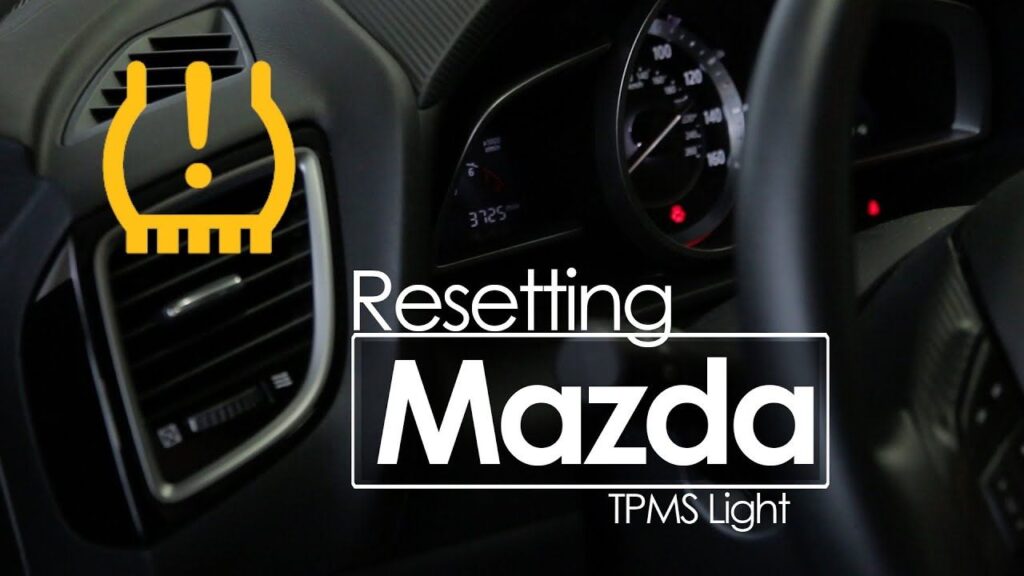
If your tyre pressure light persists after inflating your tires to the recommended levels, follow these steps to reset the TPMS:
- Drive at or above 50 mph for 10 minutes to trigger the sensor reset.
- Turn the vehicle’s key to the “On” position (without starting the engine) and hold the TPMS reset button until the tyre pressure light blinks three times. Start the car and wait for 20 minutes for the sensor to refresh.
- Inflate all tires to 3 PSI over their recommended pressure, then deflate them completely. Reinflate to the recommended levels, including the spare tire, is equipped with a sensor.
- With the vehicle off, disconnect the positive battery cable using a wrench. Turn the car on and honk the horn for about three seconds to discharge residual power. Reconnect the battery to complete the reset process.
Conclusion
Resetting the tire pressure light in a Toyota Sienna is a straightforward process that can be done manually or using the reset button method. However, if these methods fail, alternative options like using an OBD-II scanner or seeking professional help from a mechanic are available. Following regular tire maintenance practices, drivers can reduce the likelihood of encountering the tyre pressure light, ensuring a safe and smooth driving experience.
FAQ
Where is the Toyota Tire Pressure Reset Button?
Reach under and to the left of the steering wheel fee, look for the TPMS reset button, and hold it until the light on the dashboard blinks three times. Start the engine, and within 20 minutes, the system should reset itself.
How do you Reset the Tire Pressure Sensor on a 2015 Toyota Sienna?
Turn the “ON” key when the car is off, but do not start it. Once the tire pressure indicator begins to flash three times, hold down the TPMS reset button. Then, release the reset button. Start the car and give it about 20 minutes for the sensor to refresh.
Where is the TPMS Button on the Toyota Sienna?
How to Reset Tire Pressure Light Toyota Sienna, It is usually found on the dashboard, beside the driver’s sidekick panel, or under the steering wheel. Locate the TPMS reset button and hold it there for around three seconds. It would help if you used a pen or other similar utensil to get to it.
Why won’t My tire Pressure Light Go Off Even Though the Pressure is Fine?
If the warning light remains on even after you’ve filled your tires to the recommended air pressure, there can be a leak or a TPMS issue with one or more of your tires. It’s simple enough to check if there’s a leak in a tire. Just use your tire gauge to recheck the air pressure in all your tires.
Can I Reset My TPMS Myself?
With the vehicle off, turn the key to the “On” position, but do not start the car. Once the tire pressure light blinks three times, release the TPMS reset button. After starting the vehicle, give the sensor roughly 20 minutes to refresh.

